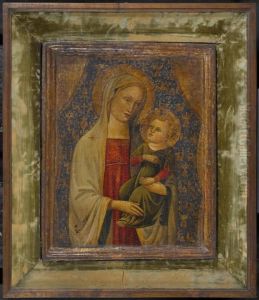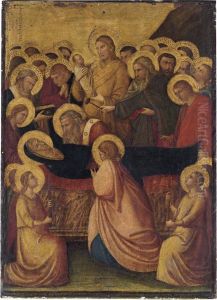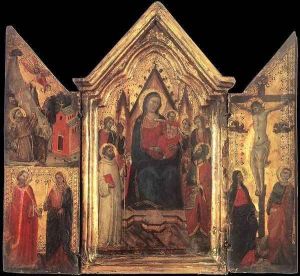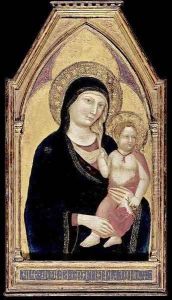Jacopo Del Casentino Paintings
Jacopo del Casentino was an Italian painter active during the late medieval period, specifically in the early 14th century. He was born around 1297 in Casentino, a region in Tuscany, from which he derived his name. Jacopo's work is representative of the Florentine school of painting, which was characterized by a detailed and ornamental style that blended Byzantine influences with the emerging naturalism of the Renaissance.
Trained in the workshop of Taddeo Gaddi, who himself was a student of the renowned Giotto, Jacopo del Casentino inherited a style that emphasized narrative clarity and an expressive use of color. His career was spent largely in Florence and Arezzo, and, like many of his contemporaries, he worked on both panel paintings and frescoes.
One of his most notable works is the altarpiece 'The Coronation of the Virgin,' which is now housed in the National Gallery of Art in Washington, D.C. This piece exemplifies his delicate line work and the gilded backgrounds that were typical of the period. Jacopo was also responsible for founding a painters' guild in Arezzo, which highlights his influence and standing within the local artistic community.
Jacopo del Casentino's contribution to art was his ability to convey religious stories with an accessible humanity, a precursor to the more advanced techniques and humanism that would be fully developed during the Renaissance. His work is often overshadowed by that of his more famous contemporaries and successors, but he played a significant role in the evolution of Florentine painting.
Jacopo's exact date of death is not known, but it is believed that he passed away around 1358. Today, his paintings can be found in various museums, and they continue to offer insight into the transitional period between the medieval and Renaissance styles of art.


















